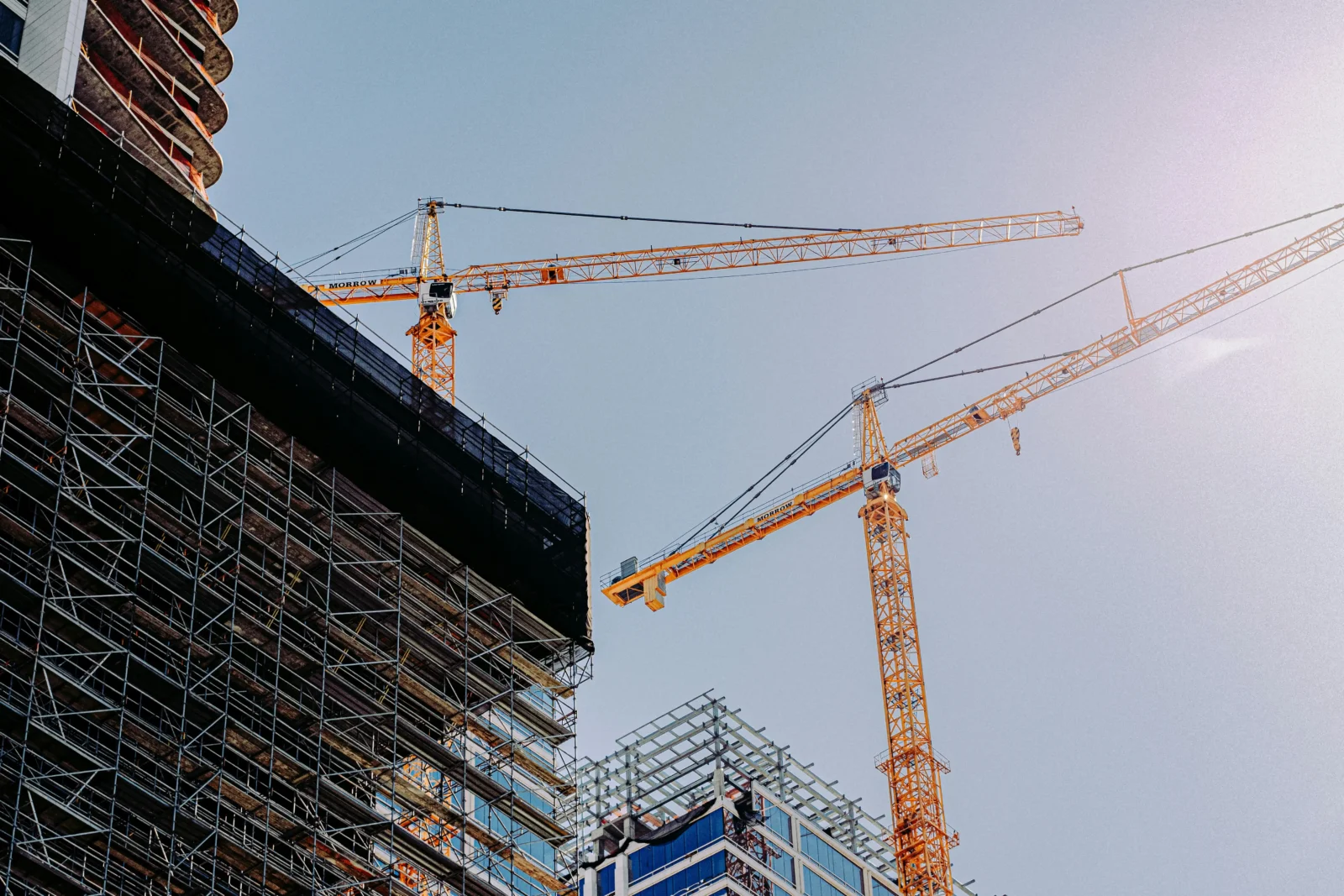- Home
- Articles
- Architectural Portfolio
- Architectral Presentation
- Inspirational Stories
- Architecture News
- Visualization
- BIM Industry
- Facade Design
- Parametric Design
- Career
- Landscape Architecture
- Construction
- Artificial Intelligence
- Sketching
- Design Softwares
- Diagrams
- Writing
- Architectural Tips
- Sustainability
- Courses
- Concept
- Technology
- History & Heritage
- Future of Architecture
- Guides & How-To
- Art & Culture
- Projects
- Interior Design
- Competitions
- Jobs
- Store
- Tools
- More
- Home
- Articles
- Architectural Portfolio
- Architectral Presentation
- Inspirational Stories
- Architecture News
- Visualization
- BIM Industry
- Facade Design
- Parametric Design
- Career
- Landscape Architecture
- Construction
- Artificial Intelligence
- Sketching
- Design Softwares
- Diagrams
- Writing
- Architectural Tips
- Sustainability
- Courses
- Concept
- Technology
- History & Heritage
- Future of Architecture
- Guides & How-To
- Art & Culture
- Projects
- Interior Design
- Competitions
- Jobs
- Store
- Tools
- More
5 Social Media Mistakes Architects Should Avoid for a Stronger Online Presence

In today’s digital age, social media isn’t just a platform for sharing personal moments; it’s a powerful tool for architects to showcase their work, connect with clients, and build their brand. However, while the potential rewards are significant, the pitfalls can be equally daunting. Navigating the social media landscape requires a keen understanding of what to do—and more importantly, what not to do.
We’ve all seen those cringe-worthy posts or poorly managed accounts that do more harm than good. As architects, our online presence should reflect our professionalism and creativity. Let’s explore the top five mistakes architects should steer clear of to ensure their social media strategy enhances, rather than undermines, their reputation.

Table of Contents
ToggleUnderstanding the Importance of Social Media for Architects
Social media presents a powerful platform for architects to showcase their skills and connect with potential clients. It’s essential for architects to harness the benefits of digital presence in the modern landscape.
The Role of Digital Presence in Modern Architecture
Digital presence offers architects the chance to display their portfolios, attract attention, and build credibility. By sharing high-quality images and videos of completed projects, architects can highlight their expertise and creativity. This visibility allows architects to reach broader audiences, including potential clients and collaborators. Maintaining an updated and aesthetically pleasing online profile enhances an architect’s reputation and positions them as leaders in the field.
Impact of Social Media on Professional Networking
Social media enables architects to engage with industry peers and expand their professional network. Platforms like LinkedIn and Twitter allow architects to participate in discussions, share insights, and stay updated with industry trends. Establishing connections with other professionals can result in collaboration opportunities, knowledge exchange, and referrals. By being active on social media, architects can stay relevant and influential in their professional communities.
Mistake 1: Neglecting Brand Consistency
Architects often overlook brand consistency on social media, compromising their professional image. Staying consistent with your brand is critical for maintaining trust and recognition.
The Importance of a Cohesive Online Identity
A cohesive online identity reinforces our brand’s message and values. When our social media profiles present a unified image, it becomes easier for clients and collaborators to recognize and remember us. Inconsistencies can confuse potential clients and dilute our brand’s impact. Each element, from our logo to color schemes and typography, should align across all platforms.
- Define Brand Guidelines: Specify the visual and verbal elements we should consistently use. These include logos, color palettes, fonts, and tone of voice.
- Use Templates: Develop templates for posts, videos, and stories. Templates ensure a uniform look and feel, reinforcing our brand identity.
- Schedule Regular Audits: Periodically review our social media profiles. Identify and fix deviations to maintain consistency.
- Align Content with Brand Values: Share content that reflects our brand’s ethos. This alignment helps in creating a coherent and recognizable brand image.
- Leverage Tools: Utilize social media management tools to schedule posts and maintain brand consistency across multiple platforms.
By avoiding these common mistakes, architects can create a strong, recognizable presence on social media, helping to attract clients and collaborations.

Mistake 2: Overlooking Engaging Content
Engaging content is essential for architects on social media. Ignoring it limits reach and reduces engagement.
Strategies for Creating Compelling Posts
Effective strategies enhance post engagement:
- Visuals: High-quality photos and videos highlight projects.
- Stories: Narratives about design choices captivate readers.
- Trends: Current design trends and innovations attract attention.
- Tutorials: Step-by-step guides on design aspects provide value.
- Polls: Interactive polls and questions engage followers.
- Project Showcases: Detailed images and descriptions of completed projects.
- Behind-the-Scenes: Insights into the design and building process.
- Client Testimonials: Satisfied client stories add credibility.
- Before-and-After: Transformation photos from initial stage to completion.
- Live Q&A: Real-time engagement sessions answer follower queries.
Mistake 3: Ignoring Audience Interaction
Ignoring audience interaction can damage our online presence and brand credibility. Let’s explore why engaging with our audience is essential.
The Benefits of Responding to Comments and Messages
Responding to comments and messages boosts engagement and builds relationships. When we reply promptly, we show our audience that we value their input. This can lead to increased trust and loyalty. Engaging with followers can also help us gain insights into trends. For example, by addressing frequently asked questions, we can identify common concerns and preferences.
How to Effectively Manage Online Feedback
Managing online feedback requires a proactive approach. We should monitor our posts regularly, looking for comments that need responses. Using tools like Hootsuite or Buffer can streamline this process. It’s crucial to handle negative feedback professionally. Acknowledge the issue, provide a solution, and show empathy. By doing so, we can turn a negative experience into a positive one. Additionally, consider setting up alerts for mentions of our brand. This way, we can engage with users even when they don’t comment directly on our posts.

Mistake 4: Using Inappropriate Hashtags
Architects often misuse hashtags on social media, which limits their reach and engagement. It’s crucial to use relevant and effective hashtags.
Choosing the Right Hashtags for Architecture
Selecting the right hashtags helps architects target the appropriate audience. Use specific hashtags like #ModernArchitecture, #SustainableDesign, and #UrbanPlanning to reach users interested in those topics. Combine these with popular but relevant tags such as #ArchitectureLovers and #BuildingDesign. Research trending hashtags in the architecture community and update your list regularly to stay relevant.
Common Hashtag Mistakes to Avoid
Several mistakes can reduce the visibility of your posts:
- Overusing General Tags: Avoid generic tags like
#design, which attract a vast but untargeted audience. - Ignoring Niche Hashtags: Missing out on niche-specific tags like
#MinimalistArchitecturecan limit engagement from a targeted community. - Using Irrelevant Tags: Irrelevant tags may mislead your audience and hurt your credibility. For instance, using
#FoodLoversfor an architectural post confuses users. - Neglecting Hashtag Limits: Instagram allows 30 hashtags per post, but using too many can seem spammy. Stick to up to 10 well-chosen, relevant hashtags.
- Skipping Trends: Failing to adapt to trending and relevant tags, such as those for events like
#WorldArchitectureDay, can make your content less discoverable.
Using effective hashtags ensures that architects can maximize their social media engagement and visibility.
Mistake 5: Failing to Monitor Analytics
Architects missing out on monitoring social media analytics lose insights essential for optimizing their strategies. Tracking performance helps us understand what’s working and what’s not, driving better engagement and results.
Tools for Tracking Social Media Performance
Several tools help track social media performance effectively. We find the following valuable:
- Hootsuite: Offers comprehensive analytics and allows for detailed reporting on engagement, follower growth, and top-performing posts.
- Buffer: Provides insights into post-performance, audience demographics, and social reach.
- Sprout Social: Integrates analytics with engagement metrics, helping identify trends and measure ROI.
- Google Analytics: Tracks social media traffic to our website, offering data on user behavior and conversions.
- Iconosquare: Focuses on Instagram analytics, showcasing follower trends, content performance, and optimal posting times.
How to Use Data to Improve Social Media Strategy
Analyzing collected data can refine our social media strategies. Below are key steps to leverage this data:
- Analyze Engagement Rates: Identifying which posts receive the most engagement reveals our audience’s preferences.
- Refine Content Strategy: Crafting more of the content types that perform well keeps our audience engaged.
- Optimize Posting Times: Knowing when our audience is most active ensures maximum visibility and interaction.
- Adjust Hashtag Use: Reviewing which hashtags lead to higher engagement helps us optimize their use.
- Measure ROI: Tracking conversions and website traffic from social media links determines the effectiveness of our campaigns.
Monitoring analytics is crucial to maintaining a robust and successful social media presence for architects.
Conclusion
Architects can harness social media to elevate their brand, connect with clients, and showcase their creativity. Avoiding common mistakes ensures success and maximizes potential benefits. By choosing the right hashtags, we can increase visibility and engagement. Regularly monitoring social media analytics helps in refining our strategies and measuring effectiveness. Using tools like Hootsuite, Buffer, and Google Analytics streamlines this process.
Avoiding these pitfalls allows us to maintain a strong and influential social media presence, ultimately supporting our architectural goals.
- architects digital marketing strategy
- architects social media best practices
- architects social media strategy
- avoid social media mistakes architects
- building online presence architects
- Effective Social Media for Architects
- improving architects social media
- Online Presence for Architects
- social media guide for architects
- social media marketing for architects
- Social media tips for architects
- strengthening architects' online presence
A licensed architect with hands-on studio experience, I translate complex design ideas into clear, engaging stories for a global audience. As a seasoned content writer and editor, I craft articles, project features, and thought-leadership pieces that illuminate emerging technologies, sustainable practices, and cutting-edge design trends—always with an architect’s eye for detail, accuracy, and narrative flow. My goal is to bridge practice and publication, giving fellow professionals and curious readers alike the insight and inspiration they need to push architectural boundaries.
Submit your architectural projects
Follow these steps for submission your project. Submission FormLatest Posts
Dependable Service for Everyday Appliance Problems
When a washer stalls mid-cycle or a fridge warms up, you need...
8 Essential Web-Based Mapping Tools for Modeling Sea Level Rise and Flood Impacts
As climate change accelerates, flood risk and sea level rise have become...
How Sydney’s Architecture Responds to Climate, Light, and Lifestyle
Sydney’s architecture has never been driven by form alone. It evolves through...
Shipping Containers as Functional Infrastructure on Construction Sites
Construction sites are temporary by definition, yet the systems that support them...












Leave a comment